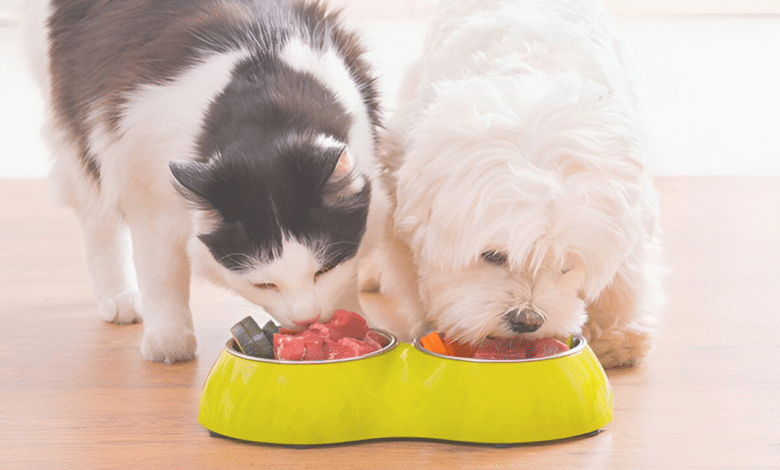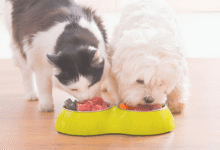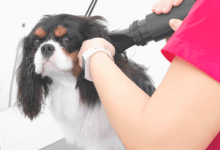
Raw Diet for Pets: Benefits, Risks, and Vet Opinions
Raw diet for pets explored benefits like healthier coats vs risks of bacteria. Vet opinions revealed. Make informed feeding choices for your dog.
The raw diet for pets has become a hotly debated topic among pet owners, breeders, and veterinarians. Advocates claim that feeding dogs and cats uncooked meat, bones, and organs aligns with their ancestral diet, leading to improved health, shinier coats, and better digestion. However, critics argue that raw feeding carries significant risks, including bacterial infections and nutritional imbalances. With strong opinions on both sides, pet owners must carefully weigh the benefits and risks before deciding if a raw diet is right for their furry companions.
As more pet food companies commercialize raw diets, the discussion has shifted from niche circles to mainstream pet care. While some pets thrive on raw food, scientific research remains limited, leaving many questions unanswered. This explores the potential advantages, possible dangers, and what veterinarians really think about raw diets helping pet owners make an informed choice for their pets’ long-term well-being.
Raw Diet for Pets
What Is a Raw Diet for Pets?
A raw diet typically consists of uncooked meat, bones, organs, and sometimes vegetables or fruits. The most common types include the BARF (Biologically Appropriate Raw Food) diet and the Prey Model Diet, which aim to replicate the eating habits of wild ancestors. Advocates believe that cooking destroys essential nutrients, making raw food a superior choice for pets. This diet often includes muscle meat, organ meats like liver, raw bones, and small amounts of plant-based ingredients. Some pet owners prepare meals at home, while others opt for commercially available raw pet food. Each approach has its own challenges, including balancing nutrients and ensuring food safety.
Benefits of a Raw Diet for Pets
Many pet owners report significant benefits after switching to a raw diet, including shinier coats, healthier skin, and improved digestion. Since raw food is free from artificial additives and fillers, it may reduce allergies and food sensitivities in some animals. Additionally, the natural enzymes in uncooked meat can enhance nutrient absorption. Another advantage is dental health chewing on raw bones can help reduce plaque and tartar buildup. Some studies suggest that raw-fed pets have higher energy levels and better weight management due to the high-protein, low-carbohydrate nature of the diet. However, these claims are often based on owner observations rather than extensive scientific research.
Risks and Concerns of a Raw Diet
Despite its popularity, a raw diet carries several risks. One major concern is bacterial contamination, such as Salmonella or E. coli, which can affect both pets and humans. Handling raw meat requires strict hygiene practices to prevent cross-contamination in the household. Another issue is nutritional imbalance—homemade raw diets may lack essential vitamins and minerals, leading to deficiencies over time. For example, an improper calcium-to-phosphorus ratio can cause bone disorders. Additionally, raw bones pose a choking hazard or may splinter, causing internal injuries. Veterinarians often caution against raw feeding due to these potential dangers.
Veterinary Opinions on Raw Feeding
Divided Professional Perspectives
Veterinary opinions on raw feeding remain split between traditional and holistic practitioners. While some vets advocate for its natural benefits, others warn of significant health risks. This division often leaves pet owners confused about the best nutritional path.
Major Veterinary Organizations’ Stance
The AVMA and FDA officially discourage raw diets due to pathogen risks and nutritional concerns. These groups cite studies showing increased Salmonella and E. coli exposure in raw-fed pets. However, they acknowledge some pets may thrive under veterinary supervision.
Holistic Veterinarian Support
Some integrative vets endorse raw diets when properly balanced and handled. They report clinical improvements in allergies, coat quality, and dental health. These practitioners often recommend commercial raw over homemade for better safety controls.
Common Veterinary Concerns
Vets frequently cite bacterial contamination risks to both pets and owners as primary objections. Additional worries include bone-related injuries, nutritional imbalances, and zoonotic disease transmission. Many refuse to recommend raw diets to immunocompromised households.
Conditional Recommendations
Vets who support raw feeding typically impose strict guidelines human-grade ingredients, proper supplementation, and regular bloodwork. They emphasize this diet isn’t suitable for all pets, particularly those with certain health conditions or in multi-pet environments.
Research Limitations
Both sides agree more Peer reviewe studies are needed on long-term raw diet effects. Current research suffers from small sample sizes and conflicting results, making evidence-based recommendations challenging for practitioners.
Client Education Emphasis
Veterinarians stress the importance of thorough owner education for those choosing raw. This includes proper handling techniques, recognizing deficiency symptoms, and having an exit strategy if the diet proves unsuitable for the pet.
How to Safely Transition to a Raw Diet
Consult Your Veterinarian First
Before switching to raw, get professional guidance. Your vet can evaluate your pet’s Health need and recommend proper nutrient ratios. This prevents deficiencies and catches any underlying conditions that raw feeding might affect.
Start with Gradual Transition
Mix 25% raw food with 75% current diet for 3-5 days. Slowly increase to 50/50 over a week, then 75/25 the following week. This phased approach helps avoid digestive upset while allowing their system to adapt.
Select Quality Ingredients
Choose human-grade, antibiotic-free meats from reputable suppliers. Rotate proteins (beef, poultry, fish) for variety and include organs (liver, kidney) for vital nutrients. Never use spoiled or questionable meats.
Maintain Strict Hygiene
Designate separate cutting boards and bowls for raw prep. Wash all surfaces with hot, soapy water after use. Store raw portions in airtight containers and thaw safely in the fridge to prevent bacterial growth.
Monitor Health Indicators
Track weight, coat condition, and stool quality weekly. Ideal stools are firm but not dry. Watch for allergies (itching, ear infections) and adjust proteins if needed. Schedule follow-up bloodwork with your vet after 2-3 months.
Balance Nutritional Components
Follow the 80-10-10 rule: 80% muscle meat, 10% edible bone, 10% organs (half being liver). Add omega-3s (fish oil) or probiotics if needed. Avoid toxic foods like onions, grapes, or excess salt.
Consider Pre-Made Options
Commercial raw diets simplify balancing nutrients and reduce prep time. Look for brands with AAFCO certification and high-pressure processing (HPP) for safety. Compare labels to ensure complete nutrition.
Adjust for Special Needs
Puppies/kittens need more frequent meals with higher calcium. Senior pets may require softer bones or joint supplements. Always tailor portions to activity level to prevent obesity or malnutrition.
Prepare for Challenges
Some pets refuse raw initially try hand-feeding or warming slightly. If diarrhea occurs, add pumpkin puree or slow the transition. Keep emergency kibble on hand during adjustment periods.
Read More: How to Stop Cat Scratching (Without Declawing)
Conclusion
The raw diet for pets presents both compelling benefits and notable risks that require careful consideration. While many pet owners report improvements in their animals’ coat quality, energy levels, and digestion, the potential dangers of bacterial contamination and nutritional deficiencies cannot be ignored. Before transitioning to a raw diet, consulting with a veterinarian is crucial to ensure it aligns with your pet’s specific health needs and lifestyle.
Ultimately, whether a raw diet is right for your pet depends on multiple factors, including their age, health status, and your ability to maintain proper food safety practices. While some pets thrive on this natural feeding approach, others may do better with high-quality commercial foods. By staying informed and working closely with your vet, you can make the best dietary choice to support your pet’s long-term health and happiness.
FAQs
Is a raw diet safe for all pets?
Not all pets tolerate raw food well; some may develop digestive issues or infections. Consult a vet before switching.
Can puppies and kittens eat a raw diet?
Young animals have specific nutritional needs; a poorly balanced raw diet can harm their growth. Seek veterinary guidance.
How do I prevent bacteria from raw meat?
Use high-quality meat, practice strict hygiene, and store raw pet food separately from human food.
Are commercial raw diets better than homemade?
Commercial options are often safer and nutritionally balanced, reducing risks of deficiencies.
Do vets recommend raw diets?
Opinions vary; some vets support it, while others warn against potential health risks. Always consult a professional.







